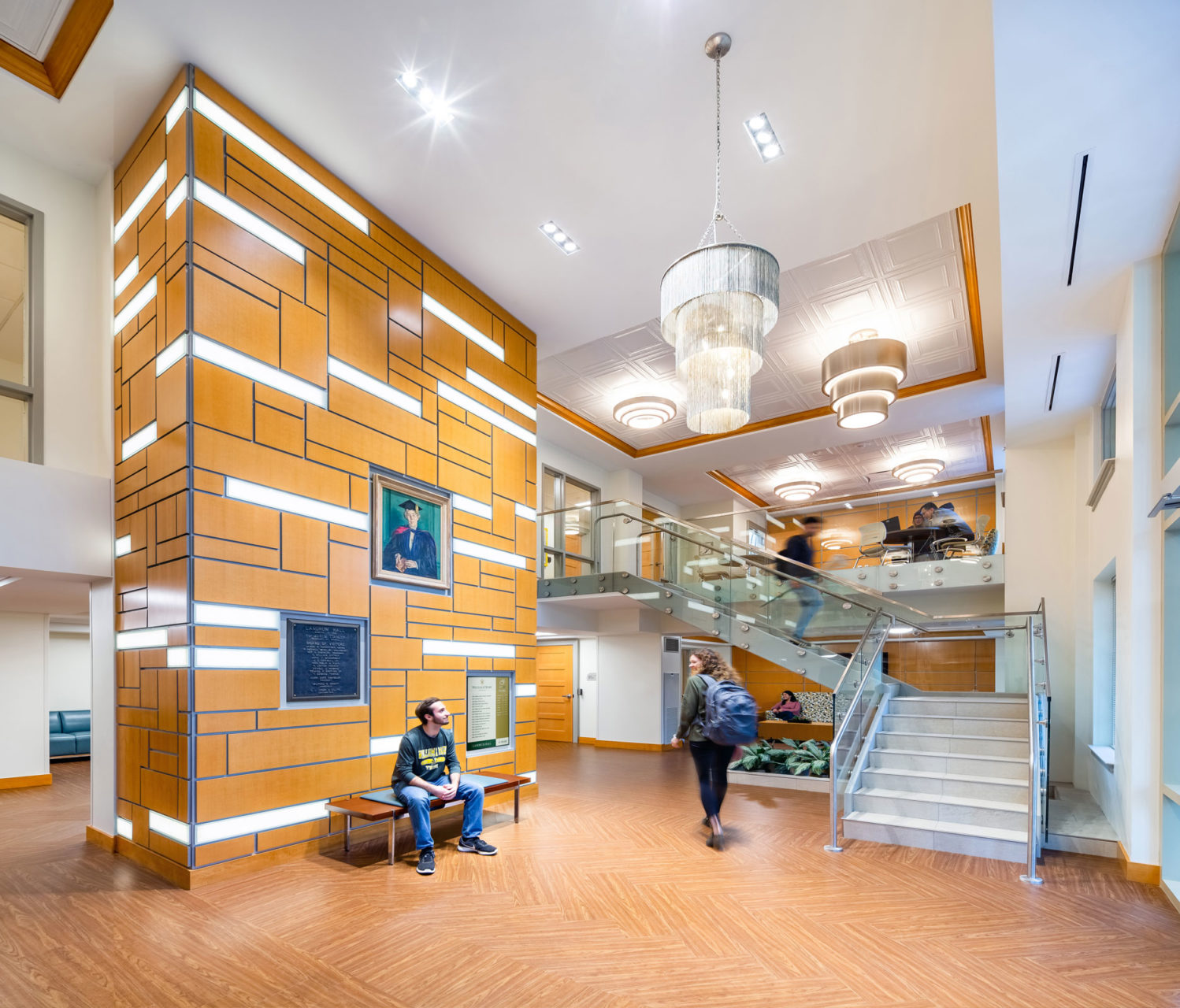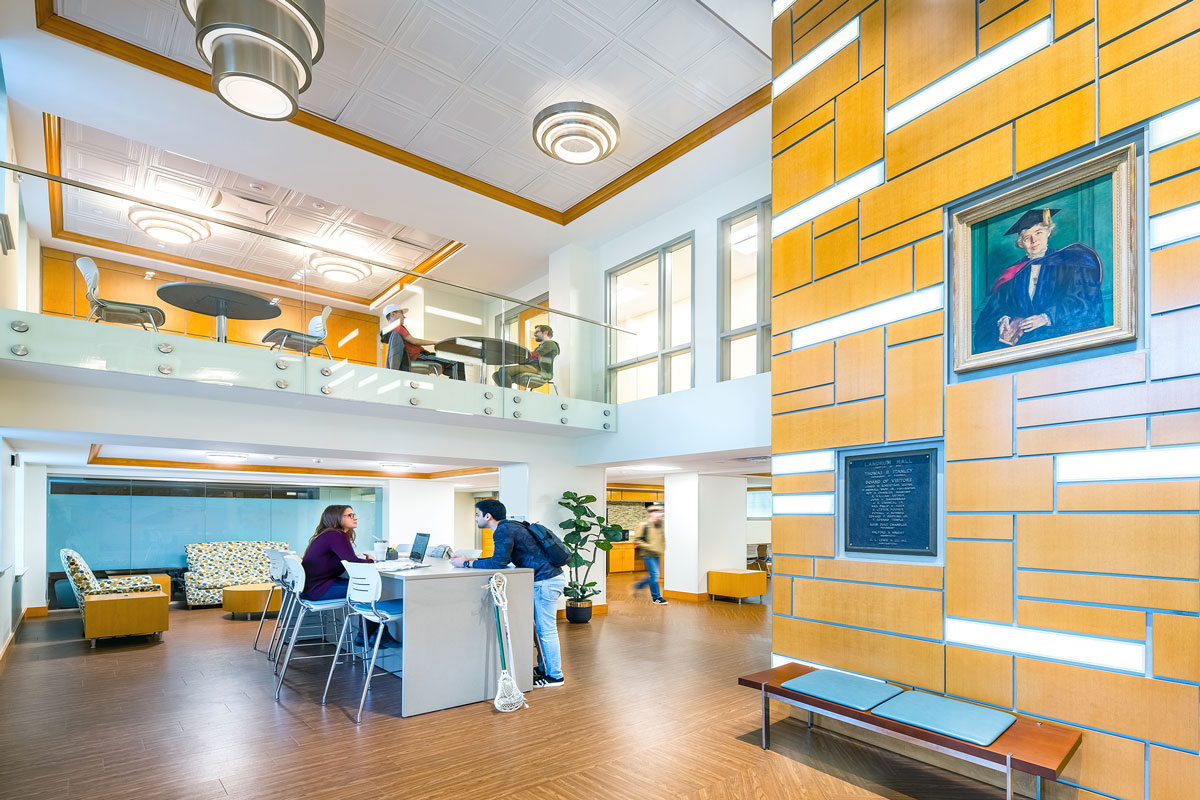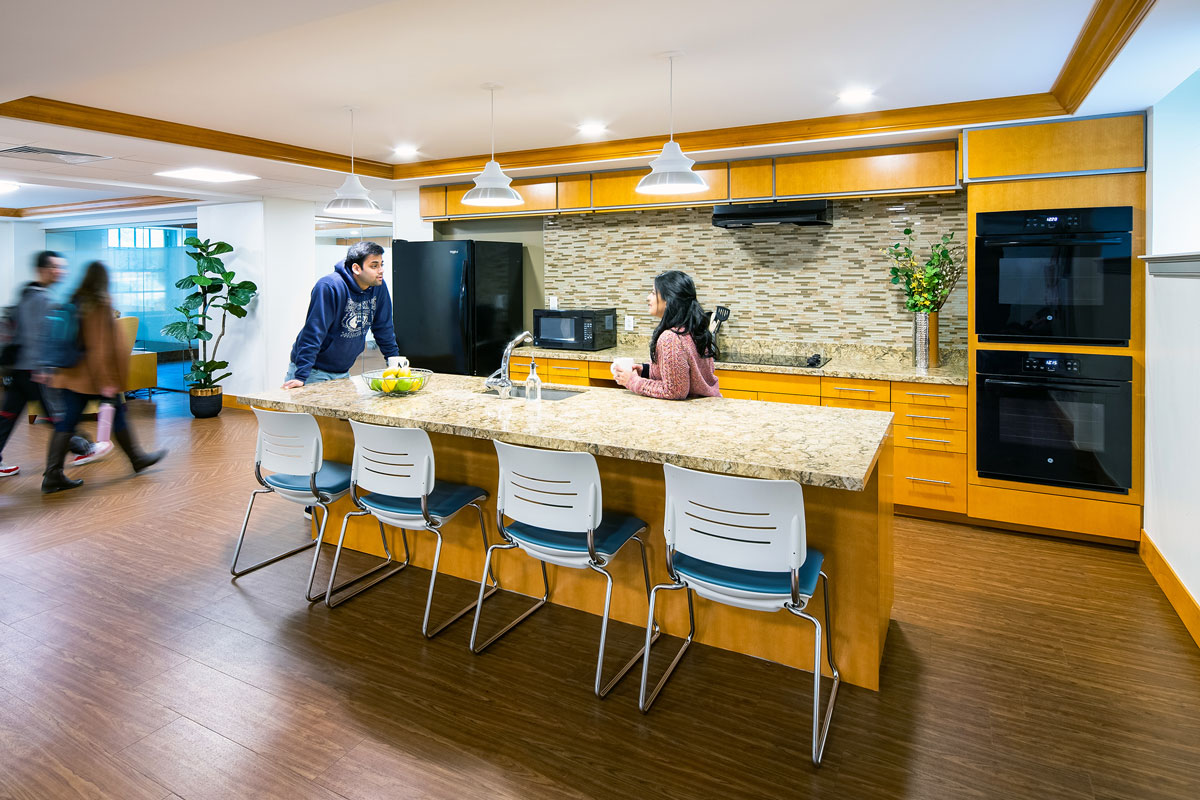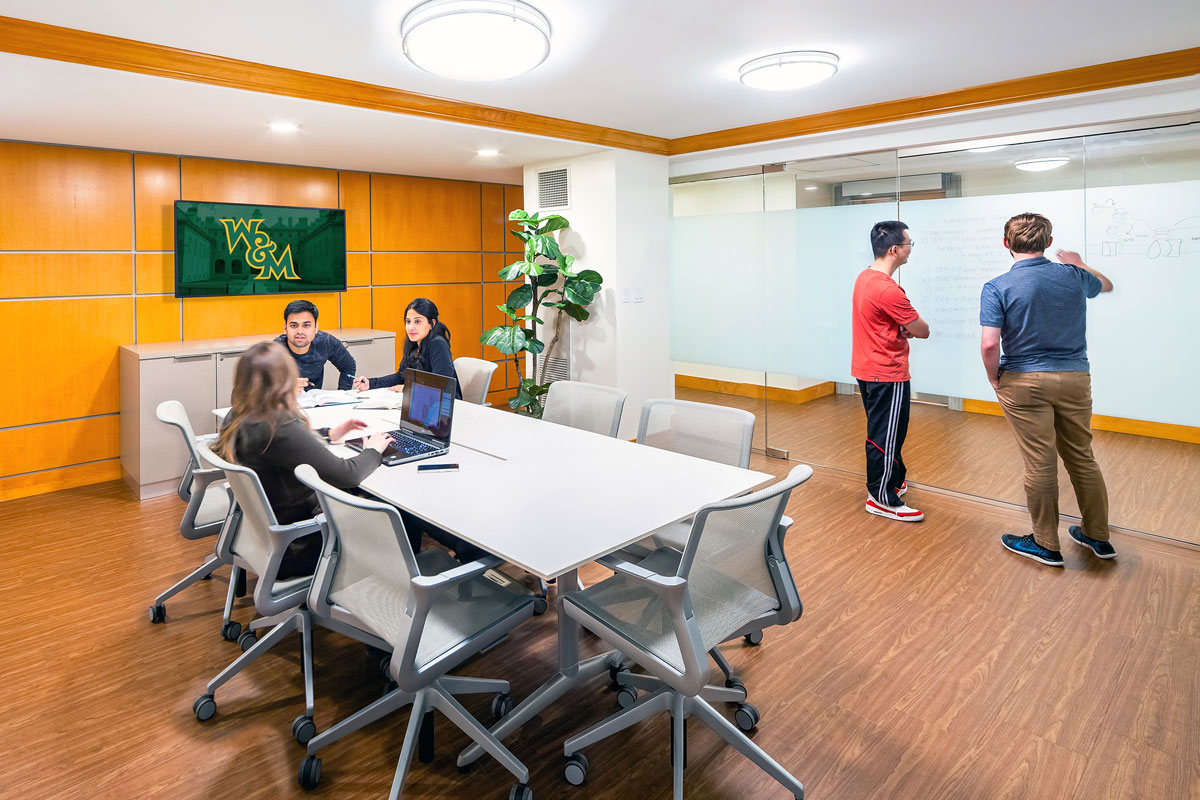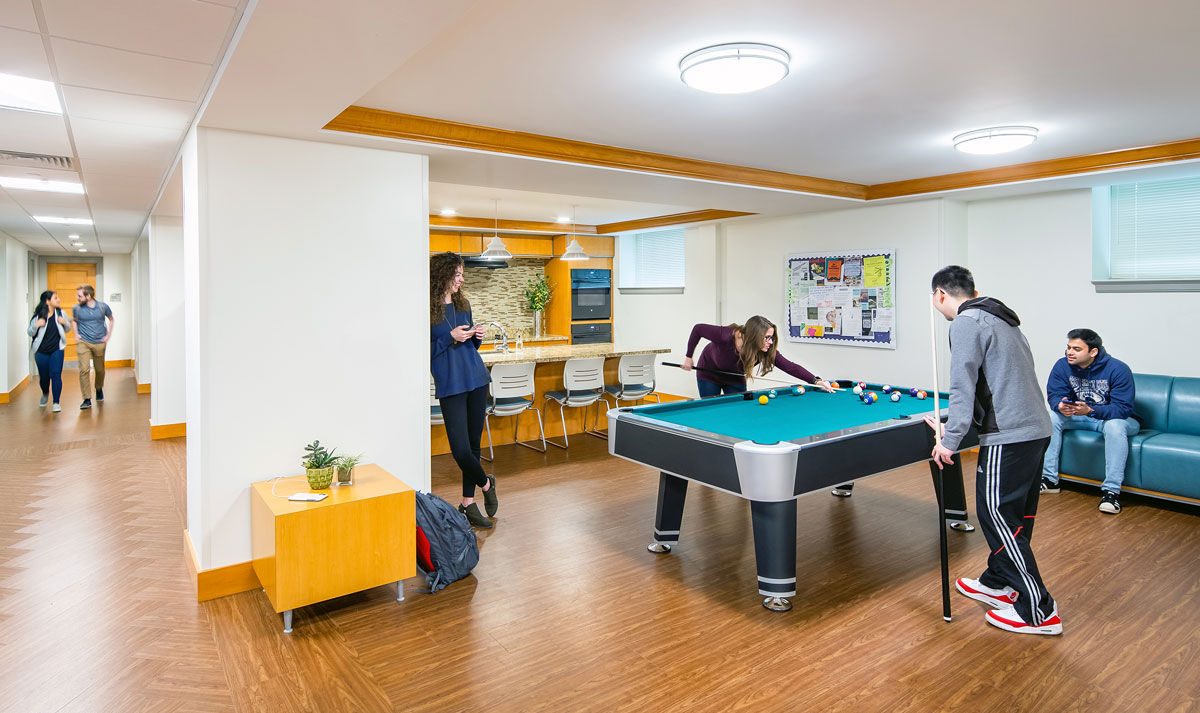As one of the oldest higher learning institutions in the United States, William & Mary has a charming, colonial style of architecture that reflects its heritage and presence in Williamsburg. Landrum Residence Hall, originally built in the 1950s, had been in continuous use since its completion with no significant renovations. Driven by the need to enhance the quality, systems, and accessibility of Landrum Hall, W&M partnered with Clark Nexsen in association with Guernsey Tingle to create a more appealing residence life experience.
Our student life experts reimagined the 221-bed undergraduate residence hall as a functional, engaging space for students to live, socialize, study, and relax.
Sited on elevated, sloped land, the design solution sought to preserve and repurpose space to improve accessibility and increase amenities without sacrificing the bed count. A new entry provides grade level accessibility and leads to an open, light-filled main entry, monumental staircase, and a shared commons area greet students and promote a social atmosphere. The design features glass-enclosed study rooms throughout the five floors, encouraging student engagement and supporting transparency in the interior spaces. The ground floor commons area is a centerpiece in enhancing the student life experience, offering lounge spaces, casual seating, a kitchen, study area, and game room. Floors two through five contain semi-suite style dorms with adjoining bathrooms, and a new elevator system provides accessibility throughout the residential building.
Located in the historic Sunken Garden precinct, the exterior of Landrum Hall is comprised of traditional red brick, which aligns with the aesthetic and identity of the campus. The new campus-facing entrance is adjacent to the Sunken Garden and connecting pedestrian walkway and features a classical balustrade with cornice detail, Ionic columns, and wood trim. A traditional, gabled roof with dormers further upholds its Georgian style. New energy efficient aluminum windows throughout the building minimize operating costs and allow plentiful daylight into rooms and hallways for a warm, welcoming feel.
